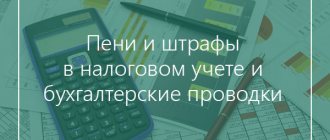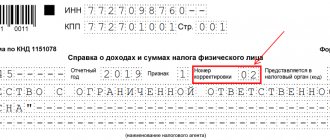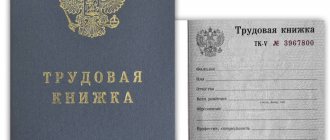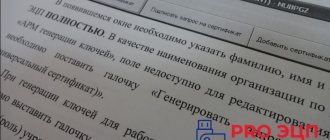How to work according to the new rules of PBU 18/02 from 2021? In what ways can current income taxes be taken into account? What will change when switching to the balance sheet method? How to calculate temporary differences when comparing the book and tax values of assets and liabilities, as well as for transactions that do not affect accounting profit, but affect future income taxes? In this article you will find all the answers.
The new edition of PBU 18/02 must be applied starting with reporting for 2020. That is, before it occurs, it is necessary to make changes to the accounting policy and decide on the rules for accounting for income tax calculations. In addition to Order of the Ministry of Finance dated November 19, 2002 No. 114n and IAS 12 “Income Taxes”, you can use the following explanations for your work:
- Information letter of the Ministry of Finance dated December 28, 2018 No. IS-accounting-13;
- recommendations of the NRBU “BMC” Foundation dated April 26, 2019 No. R-102/2019-KpR.
New names PNO and PNA
There are permanent differences. They arise if income or expenses form accounting profit, but are not taken into account when calculating income taxes, either now or in the future. Or vice versa: they are reflected only in tax accounting. Now, on the basis of permanent differences, we form permanent tax liabilities and permanent tax assets (PNO and PNA). Since the new year, they are called differently - permanent tax expenses and permanent tax revenues (PNR and PND).
Debit 99 Credit 68
- fixed tax expense is reflected;
Debit 68 Credit 99
- constant tax income is reflected.
The new names better reflect the essence of the indicators. For example, PNR reduces net profit, so it is reflected in the debit of account 99 “Profits and losses”. IPA increases profit, so it is reflected in the credit of account 99.
Temporary differences
The Ministry of Finance approved a new procedure for calculating temporary differences - balance sheet. Temporary differences are calculated by comparing the value of an asset or liability, which does not coincide in accounting and tax accounting (clause 8 of PBU 18/02 as amended in 2021). This is the only way to calculate temporary differences in the new edition of PBU 18/02. From January 1, 2021, absolutely all organizations must apply it.
To calculate temporary differences, the accountant must prepare a table of assets and liabilities. It must be done on the reporting date, for example, December 31. Do not include assets and liabilities in the table by object; it is enough to reflect aggregated indicators. For example, the line “Fixed assets” will reflect the cost minus accrued depreciation for all fixed assets.
There may be provisions for reduction in value for raw materials, goods and finished products. The value of these assets can be shown collapsed, that is, minus reserves, you can open and show the value of assets and the value of reserves separately. The same approach applies to accounts receivable: you can immediately reduce accounts receivable by the amount of the reserve for doubtful debts; you can consider these two values separately. This will not affect the overall result.
Next, we look at similar data on the value of the same group of assets and liabilities in the tax accounting system. And, in addition to the assets and liabilities already reflected, we add to the table indicators from tax accounting that are not in accounting. For example, a loss carried forward to the future, a reserve for the repair of fixed assets, which is formed only in tax accounting. Their book value will be zero.
Next, calculate the total time difference. Use this algorithm.
- Calculate the differences for each row of the table. If the book value of assets is greater than the tax value, then a taxable temporary difference arises, otherwise it is deductible. Regarding obligations, the opposite is true. If the book value of the liability is greater than the tax value, then a deductible temporary difference arises, otherwise it is taxable.
- Add up all deductible differences across assets and liabilities and separately all taxable differences. So, on the slide table we calculated the sum for each column.
- Subtract the smaller difference from the larger difference. The result will be one difference - the one that was greater: either deductible or taxable.
There may be exceptions if an organization, for example, operates and pays income tax in several regions at different income tax rates. Then consider time differences related to different regions separately.
When applying the balance sheet method, temporary differences include “unrealized” permanent differences. These are the differences that will become permanent in the next reporting period. For example:
- excess costs in work in progress, finished goods in warehouse or shipped goods;
- excess interest on borrowed funds in unfinished construction;
- R&D expenses with a coefficient of 1.5 in unfinished developments.
For example, work in progress includes an expense that is recognized only in accounting and is not taken into account for tax purposes. When the finished product is sold, this expense forms a permanent difference. However, until it “reaches” account 90 “Sales” or 91 “Other income and expenses,” we consider it as temporary. These differences will accumulate in the composition of assets - goods, finished products in the warehouse, work in progress, etc.
PBU 18/02: from official to Russian
PBU 18/02 was introduced for the purpose of interrelating profit (loss) indicators reflected in accounting and profit (loss) according to tax accounting data. It is intended to bring accounting of tax calculations closer to tax accounting. Therefore, it is so important to have a clear understanding of temporary and permanent differences and the tax assets and liabilities formed on their basis.
The regulation on accounting for income tax calculations was approved at the end of 2002, i.e. has been in effect for nine years. At the same time, users still have many questions, and with each new situation in the organization’s economic activities, more and more new ones arise.
Not every accountant has the time to understand the intricacies of constantly changing legislation. In addition, questions about the application of PBU 18 do not arise every day, and therefore, even clarified and verified information has time to be erased from memory.








